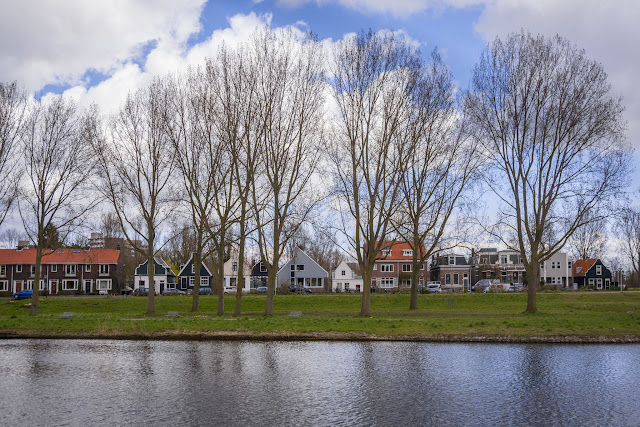 |
| First stop of the day - the Rijksmuseum, the largest museum in the Netherlands |
 |
| The famous "I amsterdam" sign is out in the back |
 |
| The Great Hall, meant to emphasize the glory of Dutch art and history |
 |
| One of the art museum's biggest highlights is "The Milkmaid," painted by Joannes Vermeer circa 1660. A normally everyday activity is translated into an impressive painting with playful lighting |
 |
| Visitors browse through works by Rembrandt and the other Dutch masters |
 |
| Here comes another big highlight... |
 |
| Neat model of a 17th century Dutch warship made in 1698 |
 |
| It's super detailed |
 |
| The museum's four-story art history library, built in 1881 |
 |
| I thought this portrait was funny. It shows a powerful merchant's son (Portrait of Gerard Andriesz Bicker, Bartholomeus van der Helst, c. 1642) |
 |
| Extremely ornate doll houses used to be popular among upper classes. Here's an example from the early 1700s, owned by a merchant's wife |
 |
| All of the contents are made from authentic materials, just really small |
 |
| This is one of several self-portraits Vincent van Gogh made after moving to Paris in 1886 as he tried to refine a new, colorful style |
 |
| What could be more quintessentially Dutch than a windmill? (A Windmill on a Polder Waterway, Paul Joseph Constantin Gabriel, 1889) |
 |
| The front of the museum. I was there for three hours and could have stayed much longer |
 |
| Dam Square |
 |
| Beurs van Berlage |
 |
| What would a trip to Amsterdam be without a bike ride? I split off from my travel partner for a few hours to ride through the Dutch countryside |
 |
| Yes! Found a windmill! |
 |
| Passing through a tiny town called Zunderdorp, population 237 |
 |
| The town of Ransdorp (population 245) |
 |
| Durgerdam, Netherlands. It's basically a metropolis compared to the other two towns, as its population totals 430 and it once served as an Amazing Race pit stop |
 |
| Back in Amsterdam, I passed another windmill, the De Gooyer windmill |
 |
| It dates from 1725 and was once a flour mill |
 |
| Amsterdam's main train station looks just like the Rijksmuseum, which is unsurprising given the same architect designed both |
 |
| Finally reunited with my travel partner, Amy. We stopped for photos at the famous "I amsterdam" sign |
 |
| The sign is a big draw in its own right, especially judging by the huge number of tourists clamoring all over the place. Thankfully we got a few relatively stranger-free pictures |
 |
| The giant letters loudly proclaim their cryptic message (I am sterdam? I, Amsterdam? I am Amsterdam? I AMsterdam?) to the picture-taking masses of museum visitors and tourists |
 |
| Our last look at the Rijksmuseum (after closing) |
 |
| Time for dinner! We found some good Dutch food not far from this canal, the Prinsengracht. The menu was heavy on gravy, potatoes, and especially meat |
 |
| The Amstel River |
 |
| The Magere Brug, a traditional wooden double-swipe bridge |
 |
| Time for our trip's grand finale - A RICK STEVES TOUR OF THE RED LIGHT DISTRICT! We made our way over to the starting point, passing through Thorbeckeplein |
 |
| Reguliersbreestraat, looking towards the Munttoren |
 |
| Rokin |
| The Royal Palace by night |
| Dam Square |
| Warmoesstraat, one of the city's oldest streets. We passed by a hallucinogens shop, men-only leather bars, BDSM clubs, sex shops, and a condom shop |
| Rick Steves took us on a quick detour down Zeedijk, away from the red windows |
| Oudezijds Kolk |
 |
| Although the city is trying to reduce their numbers, over 290 red-lit windows remain in the district |
| Theater Casa Rosso, featuring live sex shows |
 |
| We kept wandering even as we finished up Rick Steves's tour. The entire area was just so wild, new, and unusual to us since we grew up surrounded by America's Puritan attitudes towards sex |
 |
| Much calmer than the streets of the Red Light District |
That was a fun conclusion to our time in the Netherlands! We spent our Easter on a bus back to Berlin, ready to enjoy our one last full day off work. Pictures from that day and other adventures in Berlin are coming up, followed by another trip to Poland!



























